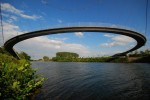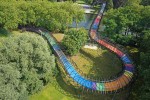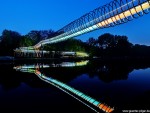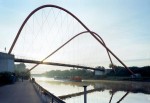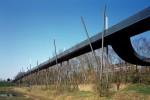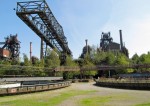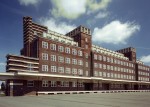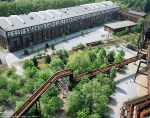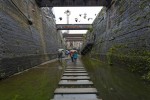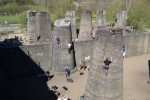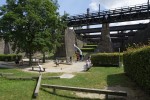Previously I wrote about Germany’s abundant and well-funded industrial heritage sites where disused rust-belt facilities are repurposed into multi-use parks with landscaping, nature, culture and recreation coexisting among the dramatic metal and concrete relics. Here I will cover more of the remarkable architecture both new and old.
In many sites striking new pedestrian / bike bridges connect public spaces that are separated by roads, rivers and other obstacles. They help make up for the country’s otherwise abysmal modern architecture which stands in sad and ugly contrast to the rich variety of fresh and exciting buildings in pretty much every other western European country.
The first one is a unique type of drawbridge in Duisburg that stretches up to lets boats pass, without opening as such, like one of those stretchy watchbands made of metal links, or a cat’s back, which has earned it the nickname “cat’s-hump”.

